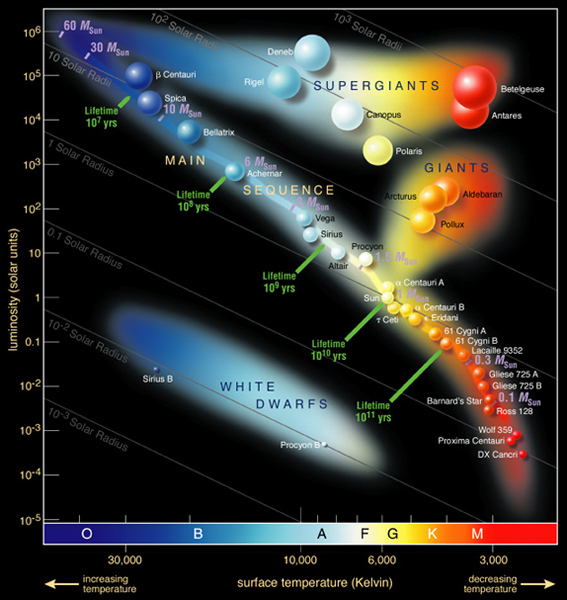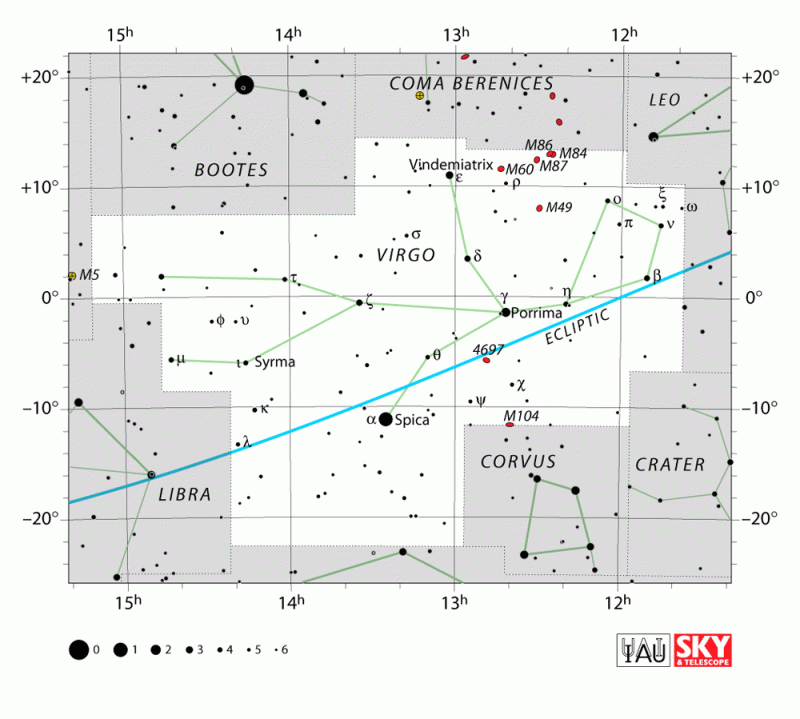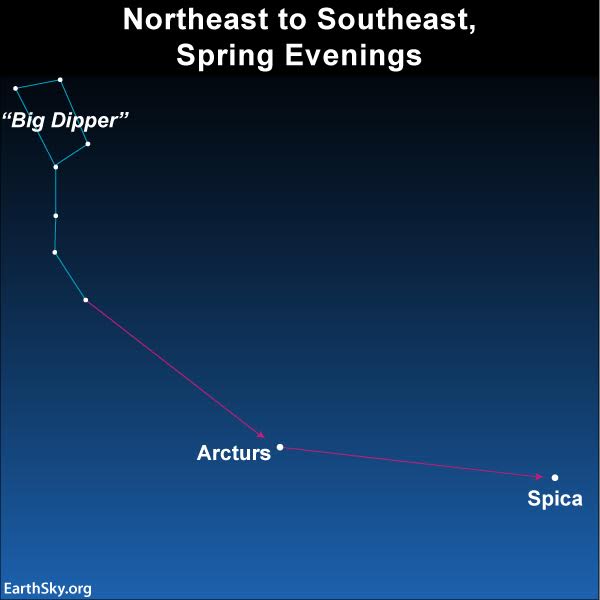On May 15 and 16, 2019, the bright waxing gibbous moon passes to the north of Spica, the brightest star in the constellation Virgo the Maiden. Spica serves as a prime example of a 1st-magnitude star, that is, one of the brightest stars in our sky. This bright star will shine in the moonlit glare on these nights.
Picking Spica out in the starry sky should be easy. As seen from around the world, no other bright star will shine so near the moon on May 15 and 16. Notice the boxy constellation Corvus the Crow near Spica. See how Corvus seems to point to Spica? The little constellation Corvus is an easy shape to pick out on the sky’s dome, although you might want to wait until the moon moves away.
Discerning Spica’s color in the glare of the moon on May 15 and 16 will be hard, too. Like Vega in the constellation Lyra, Spica in the constellation Virgo shines blue-white. Yes, stars come in different colors, and this star’s color indicates it has a high surface temperature. By contrast, the red color of Antares, brightest star in the constellation Scorpius the Scorpion, reveals that Antares has a relatively cool surface temperature. Meanwhile, our sun’s yellow color tells us that the sun’s surface temperature is greater than than that of Antares yet less than that of Spica.

Blue-white stars like Spica and Vega are large, hot, relatively young stars. They use up their thermonuclear fuel – the fuel that enables them to shine – quickly, in contrast to our more steadfast sun. Spica, which is more massive than Vega, is likely to end its life as a supernova. Vega probably isn’t massive enough to explode as a supernova. Like our sun, it’ll swell up into a red giant, slough off its outer layers and end its life as a cooling dwarf star.
Spica is actually a binary star – two stars revolving around a common center of mass – though these two stars are telescopically indistinguishable from a single point of light. The primary star in the Spica system really is a mighty star. With a spectral type of B1V, it has a surface temperature of 22,400 degrees Kelvin (22,127 Celsius, 39,860 Fahrenheit) and a luminosity 12,100 times the sun’s. It has a mass of 10.3 solar masses and a diameter 7.4 times the sun. If Spica were the same distance from us as our sun, it’d shine some 1,900 times more brightly in the visible spectrum than our sun does. Given that Spica lodges way out there at some 262 light-years, this star must be intrinsically very brilliant to shine so brightly in our sky. At Spica’s distance, our sun would be much too faint to see without a telescope.
Read more: Star brightness versus star luminosity
The dual nature of Spica was revealed by analysis of its starlight with a spectroscope, an instrument that splits light into its component colors. Spica consists of two very close-knit stars, separated by an estimated mean distance of 0.128 astronomical units (AU) (about 1/3 Mercury’s distance from the sun). The two stars orbit each other in a little over four Earth-days (0.011 Earth-years).
Like to know how astronomers know the masses of the two stars in the Spica system? Knowing the mean distance (in astronomical units) between the two companion stars in a binary system and the orbital period (in Earth-years) enables astronomers to compute the mass of the whole binary system (in solar masses) with this magical formula, mass = a3/p2, whereby a = mean distance (0.128 AU) and p = orbital period (0.011 Earth-years):
Mass = a3/p2
Mass= a x a x a/p x p
Mass = 0.128 x 0.128 x 0.128/0.011 x 0.011
Mass = 0.0020972/0.000121
Mass = 17.33 solar masses
To know the mass for each individual star, astronomers have to find out how far each star resides from the barycenter (center of mass) of the binary system. Astronomers estimate the more massive of the two stars in the Spica at about 10 solar masses and the lesser at about 7 solar masses.
Read more: How astronomers learn masses of binary stars


Bottom line: On May 15 and 16, 2019, you can use the moon to find the star Spica, the one and only 1st-magnitude star to light up the constellation Virgo the Maiden.











